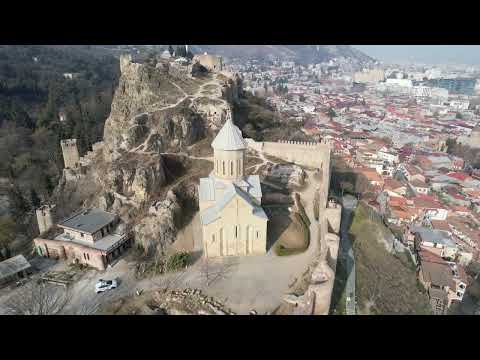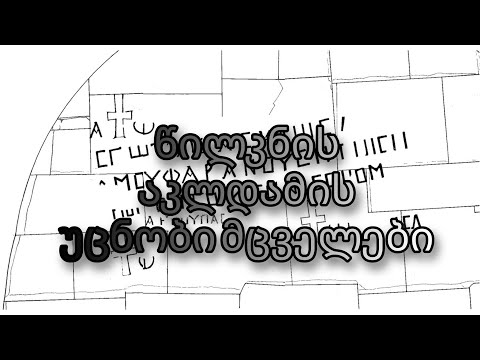წილკნის ღვთისმშობლის სახელობის საკათედრო ტაძარი / Tsilkani cathedral of the Mother of God
The Tsilkani church is credited by the medieval Georgian chronicles to King Bakar (r. c. 365–380), son of Mirian III, the first Christian king of Kartli—Iberia of the Classical sources. Originally a hall church, the cathedral was remade into a three-nave basilica in the 5th or 6th century and, eventually, reconstructed as a domed church in the 12th or 13th century. The church was further renovated in the 16th–17th century. The church was also associated in medieval Georgian tradition—elaborated in the hymns by the 13th-century cleric Arsen Bulmaisimisdze—with the monk Jesse from Antioch who came as part of the Thirteen Assyrian Fathers in Kartli around 545. It is maintained that Jesse's tomb is still preserved in the church. The cathedral was the seat of bishops of Tsilkani, first heard of in 506. The cathedral was home to the venerated Virgin Hodegetria of Tsilkani, a 9th-century icon of the Virgin and the Child attended by the archangels. The icon was repainted and refurbished at the turn of the 12th century, but the faces painted in encaustic tempera were left untouched. In 1926, the icon was moved for preservation to the Georgian National Museum in Tbilisi. #Tsilkani #Mtskheta #Georgia #GeorgianOrthodoxChurch #Patriarchate
Lasha Mtvaradze-ის სხვა ვიდეოები

ლენტეხის მაცხოვრის ამაღლების ეკლესია / The Church...
 00:58
00:58
ჯვრის მონასტერი / Jvari Monastery
 02:03
02:03
ნინო წმინდას შინი, ფოკა
 00:16
00:16
ნარიყალას წმინდა ნიკოლოზის ეკლესია / Church of St....
 02:06
02:06
ნარიყალას წმინდა ნიკოლოზის ეკლესია / Church of St....
 00:54
00:54
ნარიყალას წმინდა ნიკოლოზის ეკლესია / Church of St....
 00:46
00:46
ნარიყალას წმინდა ნიკოლოზის ეკლესია / Church of St....
 00:46
00:46
ნარიყალას წმინდა ნიკოლოზის ეკლესია / Church of St....

მსგავსი ვიდეოები

წილკნის ღვთისმშობლის სახელობის საკათედრო ტაძარი / Tsilkani c...
Lasha Mtvaradze

XI A Graders Excursion ( XI ა კლასის მოსწავლეები იყვნენ ექსკ...
Private Demirel College

#ჩვენიადგილები - წილკნის ღვთისმშობლის ტაძარი
gtavadze

საეკლესიო აღმშენებლობა - წილკნის ღვთისმშობლის ტაძარი
TV religia

საეკლესიო აღმშენებლობა - წილკნის ღვთისმშობლის ტაძარი
tvv tv

ქრისტიანული საგანძურის დარბაზი საქართველოს ეროვნულ მუზეუმში
პირველი არხი Georgian Public Broadcaster

წილკნის აკლდამის უცნობი მცველები
პანოპტიკუმი

თეა ლაშაური - Parts of the body (კომპლექსური დავალება)
წილკნის საჯარო სკოლა